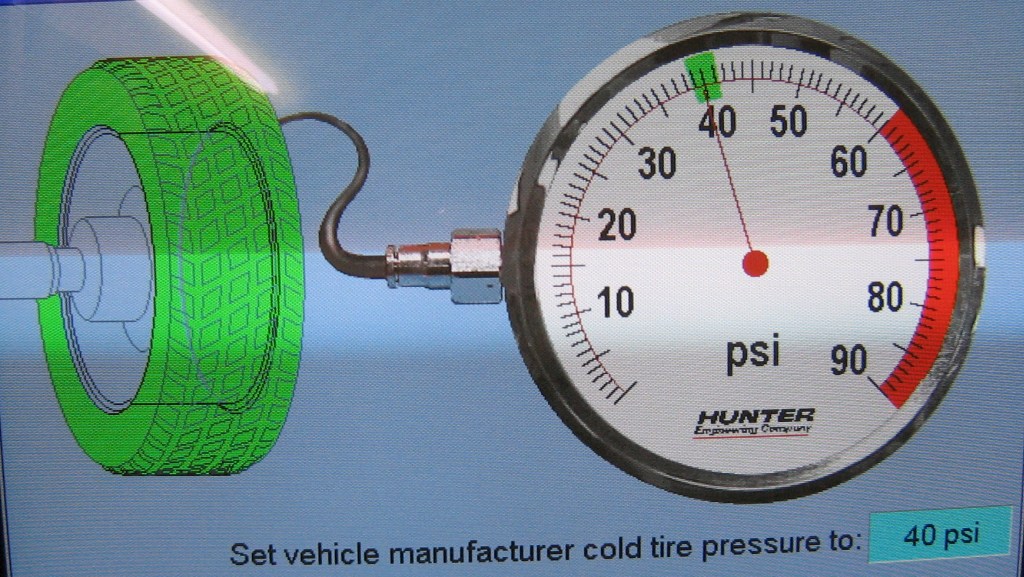A new law will be in effect soon: all California auto repair shops will be legally required to set tire pressure on every car they work on. I’ve been absorbing the reaction from folks in the industry, and observed a common theme — people really hate change.
Requiring repair shops to set tire pressure is a great idea. Why? Because car owners don’t! Just for the heck of it, I pretended the law had taken effect today and checked the tire pressure on every car I touched. I figured I’d see how inconvenient it really is, so I could gauge whether to be indignant like many of my industry peers.
I’ll start by saying that I already check the tire pressures on about half of the cars I work on in any given day. If I’m doing an oil change or any type of service work, I always check the tire pressure. However, some cars come in for door handles, or headlights, or a variety of other diagnostic or repair work, I usually do not check or set the tire pressure, sometimes I don’t even drive them into my bay.
I’ll admit, it was a little inconvenient, but hey, it’s for a good cause. I found myself especially annoyed when I forgot to set the tire pressure and had to collect the car from where I had parked it on the street to pull it back into the bay. I suppose that will become less frequent as setting tire pressure becomes a habit.
I also had one car that was not near an air hose, so I tried a 5 gallon portable air tank. I was surprised to learn that a 5 gallon tank filled to 125 PSI does not contain enough air to inflate 4 smallish (185/65R14) tires from 25 PSI to 38 PSI. I guess I’ll be needing a larger tank for cars parked too far away from a compressed air hose. Either that or I’ll need to be willing to make multiple trips with the tank.
Overall, filling every tire was not that bad. Does it take time? Yeah, it does. I think I spent an extra 15 – 20 minutes filling tires today. At $98 per hour, times 8 mechanics, that’s a considerable amount of money. And that is a point many of my industry peers have made — the state should not be able to require mechanics to provide a service for free.
However, this argument is invalid because the state does NOT say shops cannot charge to fill tires, only that they must fill tires. If a shop was of a mind, they could charge $1000 to fill tires on every car they serviced. However, I doubt they’d have many (or any) cars coming in with prices that are out of line with their competition. And that is what makes the law fair: there is a level playing field for all.
No business does something for nothing. All costs are covered in one way or another. Maybe it’s charging a dollar or two for filling tires on every repair order, maybe it’s raising the shop labor rate, maybe it’s increasing parts markup. There are any number of ways to cover the cost. Every shop can deal with it in whatever way they like best, but since ALL shops must fill tires on every car they service, no shop is at a disadvantage.
I do take issue with some parts of the law. For instance, the section that says that nitrogen filled tires need only be checked, not adjusted, by shops without nitrogen filling equipment is truly ill-advised. This perpetuates the common BUT COMPLETELY WRONG theory that tires filled with nitrogen should not be topped with “air”, which is itself about 80% nitrogen.
I’ve had customers request that I not fill their tires because they just paid another shop to fill them with nitrogen. This has caused me to change my opinion of filling tires with nitrogen from “virtually worthless” to “potentially dangerous”. If having nitrogen added to tires discourages drivers from filling their tires, it’s dangerous.
California really took a step in the wrong direction by reinforcing this fallacy. A tire filled 30% below specification with pure nitrogen is unsafe. A tire filled to specification with 70% pure nitrogen diluted with a 30% 80/20 nitrogen/oxygen mixture is JUST AS SAFE as a tire filled to specification with pure nitrogen.
Other industry complaints include gauge accuracy and the issue of setting tire pressure warm.
To the issue of gauge accuracy I say — If you’re a professional, buy a professional gauge. I spent $135 on my tire chuck. You should do the same or just stop worrying about it. The law says you need to set the tire pressure. Whether you do a good job is up to you.
To the issue of setting tire pressure warm I say — take your best guess and go for it. Surely you’ve done some cold/warm comparisons and have the ability to take a pretty good guess. Most of the time tires are grossly underinflated anyway. If a tire is at 20 PSI and the placard says 35 PSI do you need to wait for the tire to cool down to fill it?
Over all, I think this law is needed. Of all of the tires I checked today, not one of them was less than 25% underinflated. Fuel economy will suffer at 5% underinflation, by 25% underinflated, the tire is being damaged and the car is less safe to drive. Art has a policy to check the oil level on every car, no matter what is being done. It’s a bit inconvenient, just like this law, but it has saved a lot of our customers from catastrophy. This law will likely have the same effect for some, and at minimum will save a lot of fuel.
